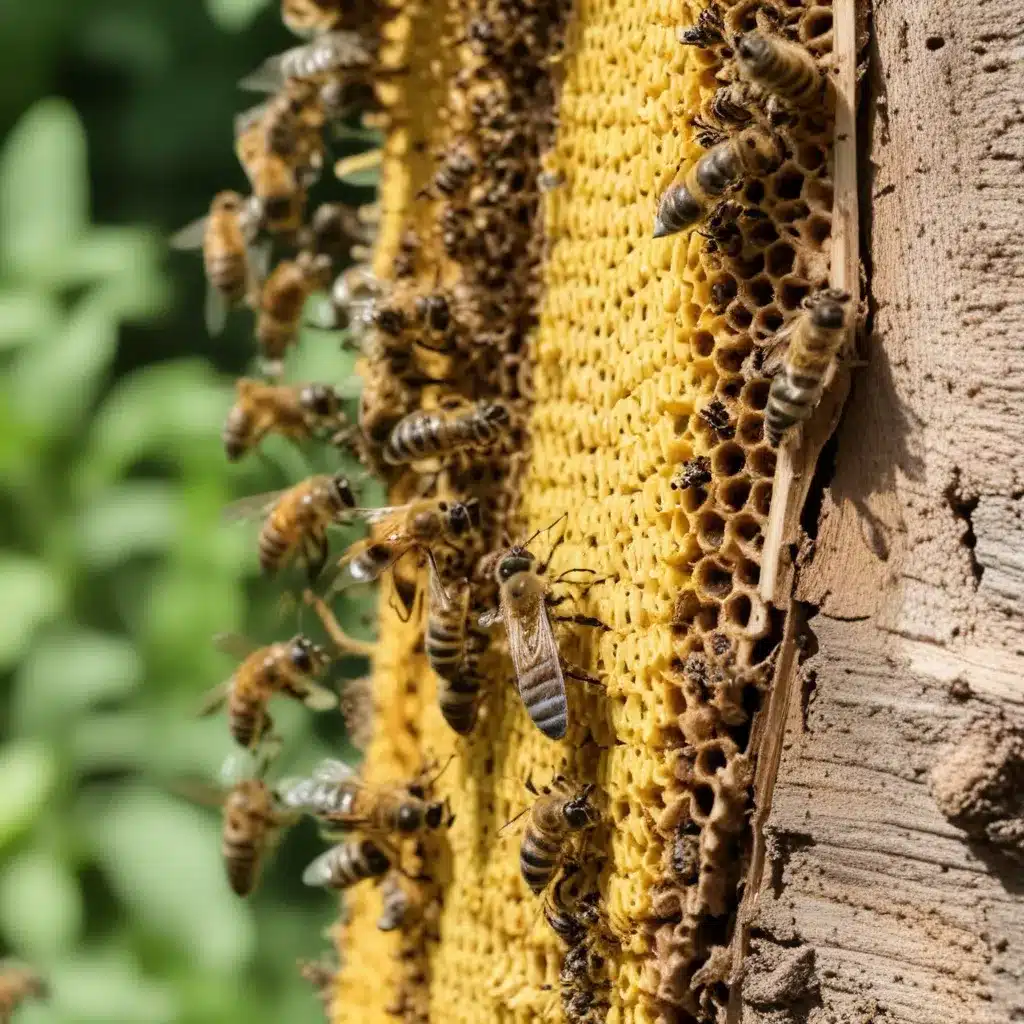
As a farm educator at Crooked Pines Farm, I’m excited to share insights on the fascinating world of backyard beekeeping and pollinator observation. Our buzzing, winged friends play a vital role in the health of our ecosystems, yet they often go unnoticed. By establishing a backyard apiary and mindfully observing the behaviors of our pollinator partners, we can develop a deeper appreciation for their invaluable contributions.
The Importance of Pollinators
Pollinators, such as bees, butterflies, moths, birds, and bats, are responsible for bringing us one out of every three bites of food. These incredible creatures sustain our ecosystems and natural resources by helping plants reproduce through pollination. Without their tireless efforts, our agricultural economies, food supply, and surrounding landscapes would collapse.
Understanding Pollinator Ecology
The diversity of pollinators is truly astounding – there are over 20,000 known species of bees alone, each with their own unique adaptations and behaviors. From the robust bumble bees with their loud buzzing, to the delicate metallic sweat bees that harmlessly land on our skin to collect salts, this vibrant community of insects plays a vital role in the web of life.
Threats to Pollinator Populations
Unfortunately, pollinators are facing unprecedented challenges. Habitat loss, pesticide use, climate change, and disease are all contributing to steep declines in pollinator populations worldwide. As stewards of the land, it’s our responsibility to take action and provide the resources these amazing creatures need to thrive.
The Role of Bees in Ecosystem Health
Bees are perhaps the most well-known and important pollinators. As they forage for nectar and pollen, they inadvertently transfer pollen between flowers, enabling the reproduction of countless plant species. This pollination service is essential for the production of fruits, vegetables, and other crops that we rely on for sustenance.
Establishing a Backyard Apiary
One of the most rewarding ways to support pollinators is by setting up a backyard apiary, or small-scale beekeeping operation, right in your own garden. This not only provides a safe haven for bees, but also allows you to observe their fascinating behaviors up close.
Site Selection and Preparation
When choosing a location for your backyard apiary, consider factors like sun exposure, wind protection, and proximity to a reliable water source. Prepare the site by ensuring there are no obstructions or hazards that could interfere with the bees’ flight paths.
Choosing the Right Bee Species
While the honey bee is a popular choice for backyard beekeepers, other native bee species, such as mason bees and leafcutter bees, can also thrive in small-scale apiaries. Each type has unique characteristics and care requirements, so research the options to find the best fit for your space and experience level.
Hive Management Considerations
Maintaining a healthy, productive beehive requires diligent hive management. This includes monitoring for pests and diseases, providing adequate food sources, and ensuring the colony has enough space to grow. Familiarize yourself with the seasonal needs of your chosen bee species to ensure their long-term success.
Observing Bee Behavior
One of the most captivating aspects of backyard beekeeping is the opportunity to observe the intricate behaviors and adaptations of bees up close. By taking the time to quietly observe your apiary, you’ll gain a deeper understanding of these remarkable creatures.
Foraging Patterns and Nectar Sources
Watch as your bees efficiently dart from flower to flower, gathering nectar and pollen to sustain their colony. Note the different foraging patterns and the specific plant species they seem to favor throughout the seasons.
Hive Dynamics and Communication
Beehives are a marvel of social organization. Witness the division of labor, the structured communication through waggle dances, and the collaborative effort required to maintain the hive. Observe how the colony responds to changes in weather, available resources, or threats.
Seasonal Adaptations
Bees exhibit fascinating seasonal adaptations to ensure their survival. In the spring, they focus on building up their population and gathering food. As summer wanes, they shift their efforts to preparing for winter by stockpiling honey and sealing the hive against the elements.
Promoting Pollinator-Friendly Gardening
While establishing a backyard apiary is a wonderful way to support pollinators, there are many other ways we can create pollinator-friendly landscapes in our own gardens and neighborhoods.
Native Plant Selection
Planting a diverse array of native flowering plants is one of the most impactful actions you can take. These species have co-evolved with local pollinators, providing them with the nectar and pollen they need throughout the growing season.
Providing Nesting Habitats
In addition to food sources, pollinators also require safe places to build their nests and raise their young. Leaving areas of bare soil, adding bee houses, and leaving dead wood or hollow stems can provide valuable nesting sites.
Reducing Pesticide Use
Perhaps most importantly, we must strive to reduce our reliance on pesticides and other chemicals that can be harmful to pollinators. Instead, explore integrated pest management strategies and organic gardening techniques to maintain a healthy, vibrant ecosystem.
By establishing a backyard apiary and incorporating pollinator-friendly practices into our gardens, we can play a vital role in supporting the health and resilience of these incredible creatures. As we observe the intricate behaviors and adaptations of our pollinator partners, we gain a deeper appreciation for the delicate web of life that sustains us all. I encourage you to venture outside, find a quiet spot, and immerse yourself in the bustling world of pollinators – it’s sure to blow your mind.
For more information and resources on backyard beekeeping and pollinator conservation, be sure to visit Crooked Pines Farm and the Pollinator Partnership website at pollinator.org.


